#james webb deepest sharpest view of universe
Text
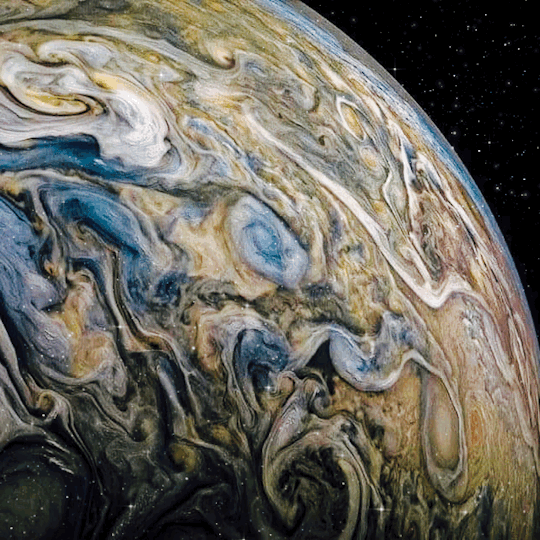

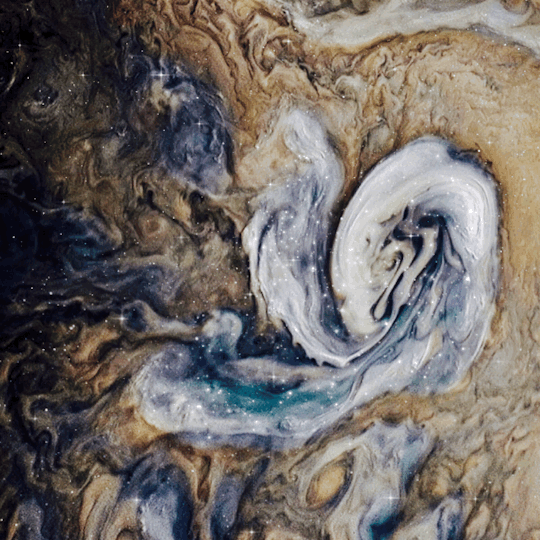
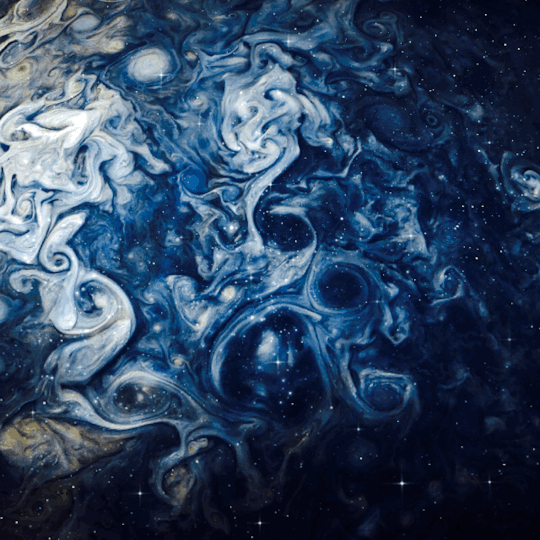
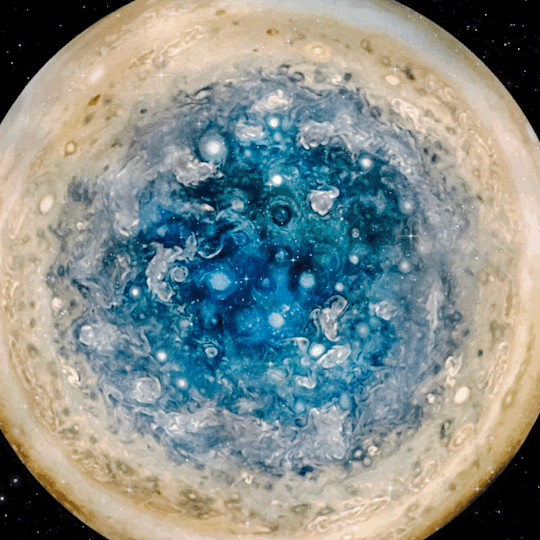

✨The Beauty of Jupiter ✨
#gifs (edits) made by me :)#assassin1513#space#space vibes#space aesthetic#jupiter#planet#planets#james webb#james webb first full colour image#james webb space telescope#james webb update#james webb deepest sharpest view of universe#webb#james webb telescope#james webb images#solar system#astrology#astronomy#nasa#beyond the stars#stars#infinity#jupiter planet#glitter#outer space#void#space art#magic#vincent van gogh
52K notes
·
View notes
Text

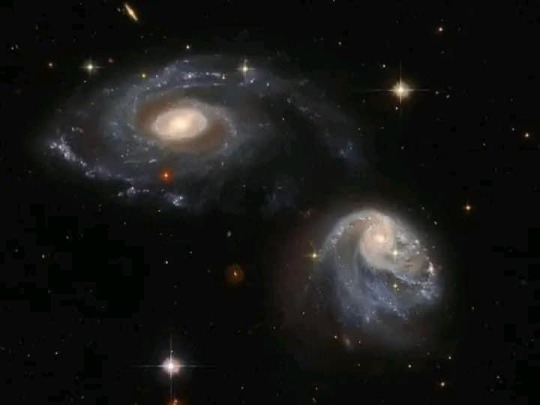
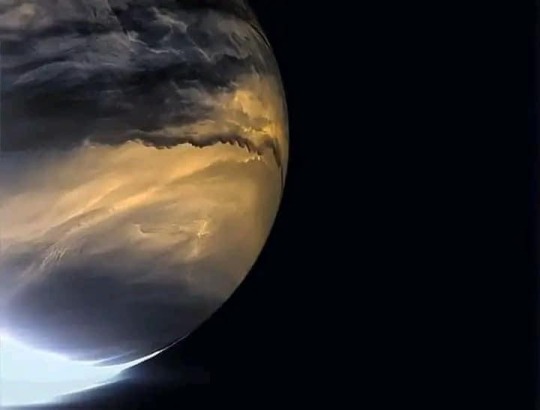

Credit:unknown
#fyppage#darkness#moon photography#astronomy#astrophotography#outer space#space aesthetic#space photography#james webb deepest sharpest view of universe#saturn#planets#stars#star girl#expanded universe#big bang theory#nasa#orbit#vampire#witchcraft#darkcore#witchythings#dark moon#moon#moon rising#astrology#scifi#science#cosmic#magic#milky way
520 notes
·
View notes
Text

#james webb telescope#lgbtq community#lesbian#lgbtq#lgbt pride#nonbinary#lgbtqia#sapphic#nonbinary lesbian#queer#gay girls#james webb update#james webb deepest sharpest view of universe#james webb space telescope#jwst#james webb images#james webb photos#webb space telescope#southern ring nebula#planet#space#solar system#galaxy#telescope#galaxies#quran#queer artist#queer pride
2K notes
·
View notes
Text


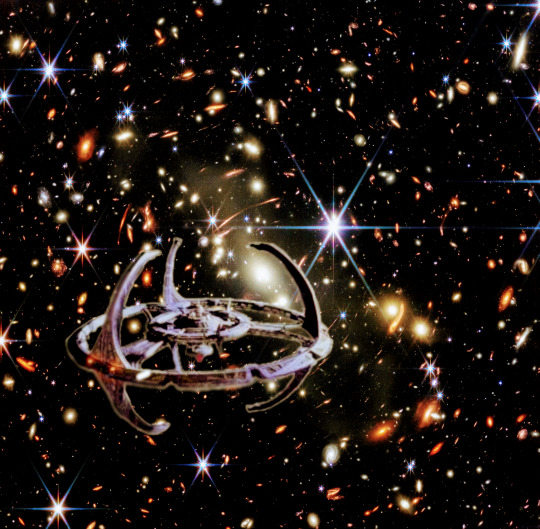
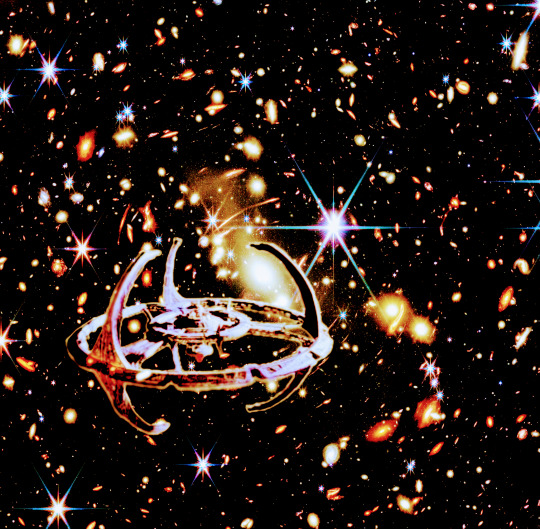
Deep Space Nine station over the sky photographed by Webb's telescope
#i wanted a nice background#this came out#it is three am#young master is saying things??#star trek#james webb deepest sharpest view of universe#james webb telescope#space#star trek ds9#deep space nine#ds9#background
3K notes
·
View notes
Text

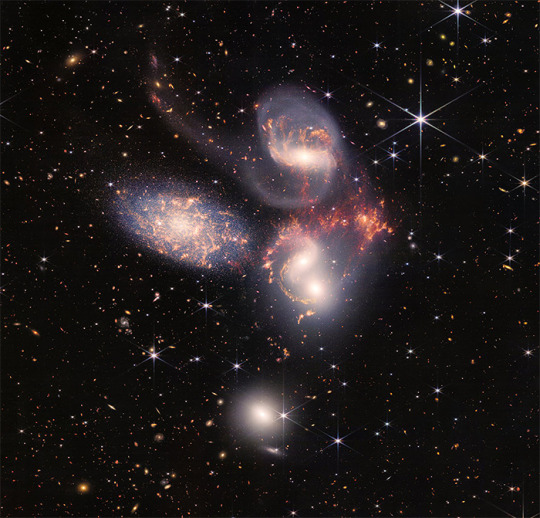


Look Beyond l Webb
This is beautiful....
#james webb space telescope#JWST#universe#tags dont work#science#stars#spacex#cosmos#photography#earth#james webb telescope#physics#jwst#nasa james webb telescope first image joe biden full color jwst space nasa#bigbang#supernova#james webb update#james webb deepest sharpest view of universe#nasa#space#astrophotography#nebula#planets#ring nebula#astronomy#galaxy#smacs 0723#outer space#black holes
2K notes
·
View notes
Text
A famous picture from the James Webb Space Telescope featured these star forming region of cold gas and dust light-years long inside M16, the Eagle Nebula, dubbed the Pillars of Creation. This image shows iconic stellar nursery. The Eagle Nebula is about 6,500 light-years distant. M16 lies along the plane of our Milky Way galaxy in a nebula rich part of the sky, toward the split constellation Serpens Cauda (the tail of the snake).
📷: NASA, ESA, CSA, STScI, Pros. Joseph DePasquale (STScI), Anton M. Koekemoer (STScI), Alyssa Pagan (STScI)

#science#universo#astronomy#outer space#news#space science#space exploration#astronomy news#space#research#a cosmic time machine how the james webb space telescope lets us see the first galaxies in the universe jwst#james webb deepest sharpest view of universe#james webb update#james webb images#james webb space technology#james webb space telescope#james webb photos
105 notes
·
View notes
Photo
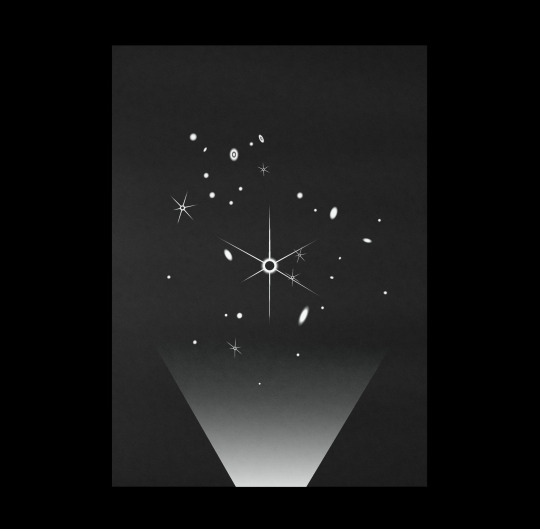
.264. Stars and Galaxies
Based on James Webb Telescope's test image
#astronomy#astrology#science#space#art#space art#astrophotography#illustration#dark#design#visual#continuum#james webb deepest sharpest view of universe#deep view#deep space#galaxies#stars#universe#digital illustration#abstract#science art#digital art#graphic design#logo#gradient#void
23 notes
·
View notes
Text
Thinking about the Hubble and James Webb telescopes and making myself real emotional. One of mankind’s greatest technological marvels to date, costing millions of dollars and thousands of man hours, made so we can look back in time at parts of the universe we will never reach.
Because we are lonely.
Because we are hopeful.
Because we are curious.
Because we are enamored with the beauty of it all.
Because maybe, just maybe, we will find someone else looking back.
#lishadra text post#james webb telescope#james webb deepest sharpest view of universe#james webb space telescope#hubble#space#humanity
20 notes
·
View notes
Text

#dark#space#cosmos#nebula#james webb deepest sharpest view of universe#james webb images#james webb update#pillars of creation#pillars of eternity#astronomy
10 notes
·
View notes
Text
James Webb Space Telescope First Images
12th July 2022 marks one of the most important days in the history of mankind. James Webb Space Telescope revealed its first images and I am at a loss for words. This blog is more than a way to share information but is a thanks to all the scientists, engineers, ad everyone else on the Webb team and a way to congratulate the entire scientific community and human kind as this marks a major step in unravelling the universe. Now I know that mine is an aerospace page but this one is going to have an astrophysics and astronomy side to it. If you want to read about the engineering behind the JWST the do read-( https://www.tumblr.com/blog/view/aerospace-anant/672455873494384640?source=share)
SMACS 0723

NASA’s James Webb Space Telescope has delivered the deepest and sharpest infrared image of the distant universe so far. Webb’s First Deep Field is galaxy cluster SMACS 0723, and it is teeming with thousands of galaxies – including the faintest objects ever observed in the infrared. Webb’s image is approximately the size of a grain of sand held at arm’s length, a tiny sliver of the vast universe. The combined mass of this galaxy cluster acts as a gravitational lens, magnifying more distant galaxies, including some seen when the universe was less than a billion years old. Einstein’s general theory of relativity describes how mass concentrations distort the space around them.
A gravitational lens can occur when a huge amount of matter, like a cluster of galaxies, creates a gravitational field that distorts and magnifies the light from distant galaxies that are behind it but in the same line of sight. The effect is like looking through a giant magnifying glass. It allows researchers to study the details of early galaxies too far away to be seen with current technology and telescopes.
It is a composite made from images at different wavelengths, totalling 12.5 hours using the NIRcam – achieving depths at infrared wavelengths beyond the Hubble Space Telescope’s deepest fields, which took weeks.
This image shows the galaxy cluster SMACS 0723 as it appeared 4.6 billion years ago, with many more galaxies in front of and behind the cluster. We are looking back in time to within a billion years after the big bang when viewing the youngest galaxies in this field. The light was stretched by the expansion of the universe to infrared wavelengths that Webb was designed to observe. Other features include the prominent arcs in this field. The powerful gravitational field of a galaxy cluster can bend the light rays from more distant galaxies behind it, just as a magnifying glass bends and warps images.
2. WASP-96b
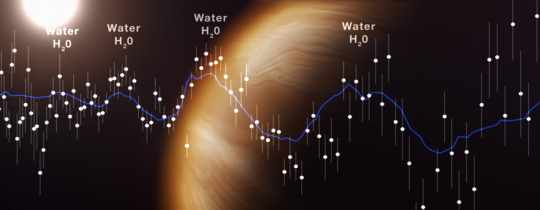
With a mass less than half that of Jupiter and a diameter 1.2 times greater, WASP-96 b is much puffier than any planet orbiting our Sun. And with a temperature greater than 1000°F, it is significantly hotter. WASP-96 b orbits extremely close to its Sun-like star, just one-ninth of the distance between Mercury and the Sun, completing one circuit every 3½ Earth-days. The combination of large size, short orbital period, puffy atmosphere, and lack of contaminating light from objects nearby in the sky makes WASP-96 b an ideal target for atmospheric observations. The observation, reveals the presence of specific gas molecules based on tiny decreases in the brightness of precise colours of light, is the most detailed of its kind to date, demonstrating Webb’s unprecedented ability to analyse atmospheres hundreds of light-years away. On June 21, Webb’s NIRISS measured light from the WASP-96 system for 6.4 hours as the planet moved across the star. The result is a light curve showing the overall dimming of starlight during the transit, and a transmission spectrum revealing the brightness change of individual wavelengths of infrared light between 0.6 and 2.8 microns.
While the light curve confirms properties of the planet that had already been determined from other observations – the existence, size, and orbit of the planet – the transmission spectrum reveals previously hidden details of the atmosphere: the unambiguous signature of water, indications of haze, and evidence of clouds that were thought not to exist based on prior observations.
3. STEPHENS QUINTET

Stephan’s Quintet, a visual grouping of five galaxies. This enormous mosaic is Webb’s largest image to date, covering about one-fifth of the Moon’s diameter. It contains over 150 million pixels and is constructed from almost 1,000 separate image files. With its powerful, infrared vision and extremely high spatial resolution, Webb shows never-before-seen details in this galaxy group. Sparkling clusters of millions of young stars and starburst regions of fresh star birth grace the image. Sweeping tails of gas, dust and stars are being pulled from several of the galaxies due to gravitational interactions. Most dramatically, Webb captures huge shock waves as one of the galaxies, NGC 7318B, smashes through the cluster. Tight groups like this may have been more common in the early universe when their superheated, infalling material may have fuelled very energetic black holes called quasars. Even today, the topmost galaxy in the group – NGC 7319 – harbours an active galactic universe, a supermassive black hole 24 million times the mass of the Sun. It is actively pulling in material and puts out light energy equivalent to 40 billion Suns. In NGC 7320, the leftmost and closest galaxy in the visual grouping, Webb was able to resolve individual stars and even the galaxy’s bright core. it will help scientists understand the rate at which supermassive black holes feed and grow. Webb also sees star-forming regions much more directly, and it is able to examine emission from the dust – a level of detail impossible to obtain until now.
4. SOUTHERN RING NEBULA

Two cameras aboard Webb captured the latest image of this planetary nebula, catalogued as NGC 3132, and known informally as the Southern Ring Nebula. It is approximately 2,500 light-years away. The dimmer star at the centre of this scene has been sending out rings of gas and dust for thousands of years in all directions, and NASA’s James Webb Space Telescope has revealed for the first time that this star is cloaked in dust. This observation shows the Southern Ring Nebula almost face-on, but if we could rotate it to view it edge-on, its three-dimensional shape would more clearly look like two bowls placed together at the bottom, opening away from one another with a large hole at the center.
Two stars, which are locked in a tight orbit, shape the local landscape. Webb's infrared images feature new details in this complex system. The stars – and their layers of light – are prominent in the image from Webb’s NIRCam on the left, while the image from Webb’s MIRI on the right shows for the first time that the second star is surrounded by dust. The brighter star is in an earlier stage of its stellar evolution and will probably eject its own planetary nebula in the future.
In the meantime, the brighter star influences the nebula’s appearance. As the pair continues to orbit one another, they “stir the pot” of gas and dust, causing asymmetrical patterns.
Each shell represents an episode where the fainter star lost some of its mass. The widest shells of gas toward the outer areas of the image were ejected earlier. Those closest to the star are the most recent. Tracing these ejections allows researchers to look into the history of the system.
As the star ejects shells of material, dust and molecules form within them – changing the landscape even as the star continues to expel material. This dust will eventually enrich the areas around it, expanding into what’s known as the interstellar medium. And since it’s very long-lived, the dust may end up traveling through space for billions of years and become incorporated into a new star or planet.
5. CARINA NEBULA

This landscape of “mountains” and “valleys” speckled with glittering stars is actually the edge of a nearby, young, star-forming region called NGC 3324 in the Carina Nebula. Captured in infrared light by NASA’s new James Webb Space Telescope, this image reveals for the first time previously invisible areas of star birth. Called the Cosmic Cliffs, Webb’s seemingly three-dimensional picture looks like craggy mountains on a moonlit evening. In reality, it is the edge of the giant, gaseous cavity within NGC 3324, and the tallest “peaks” in this image are about 7 light-years high. The cavernous area has been carved from the nebula by the intense ultraviolet radiation and stellar winds from extremely massive, hot, young stars located in the center of the bubble, above the area shown in this image.
The blistering, ultraviolet radiation from the young stars is sculpting the nebula’s wall by slowly eroding it away. Dramatic pillars tower above the glowing wall of gas, resisting this radiation. The “steam” that appears to rise from the celestial “mountains” is actually hot, ionized gas and hot dust streaming away from the nebula due to the relentless radiation. Because of Webb’s sensitivity to infrared light, it can peer through cosmic dust to see these objects. Protostellar jets, which emerge clearly in this image, shoot out from some of these young stars. The youngest sources appear as red dots in the dark, dusty region of the cloud. Objects in the earliest, rapid phases of star formation are difficult to capture, but Webb’s extreme sensitivity, spatial resolution, and imaging capability can chronicle these elusive events.
These observations of NGC 3324 will shed light on the process of star formation. Star birth propagates over time, triggered by the expansion of the eroding cavity. As the bright, ionized rim moves into the nebula, it slowly pushes into the gas and dust. If the rim encounters any unstable material, the increased pressure will trigger the material to collapse and form new stars.
BIBLIOGRAPHY:
1. https://www.nasa.gov/webbfirstimages
2. https://webbtelescope.org/contents/news-releases/2022/news-2022-031
3. https://webbtelescope.org/glossary.html#h3-CK-2572b869-1584-45c0-a18b-0c5ffcf32e57
4. https://esawebb.org/announcements/ann2207/
5. https://hubblesite.org/contents/articles/gravitational-lensing
#james webb first full colour image#physics#science#aerospace#space#tech#james webb space telescope#james webb 5 points on what new telescope aims to achieve james webb#james webb deepest sharpest view of universe#nasa#carina nebula#astronomy#webb#jwst#images#first images
13 notes
·
View notes
Link
14 notes
·
View notes
Text
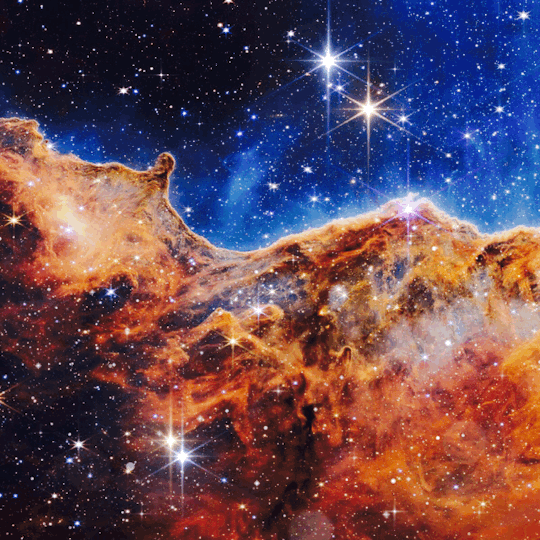



✨James Webb Beauty ✨
#gifs (edits) made by me :)#james webb telescope#james webb images#james webb update#james webb space telescope#james webb first full colour image#james webb deepest sharpest view of universe#james webb#nasa#space#space aesthetic#space vibes#galaxy#astronomy#astrology#stars#star#beyond the stars#void#to infinity and beyond#star cluster#nebula#infinity#outer space#webb#cosmos#universe#the universe#magic#glitter
11K notes
·
View notes
Text

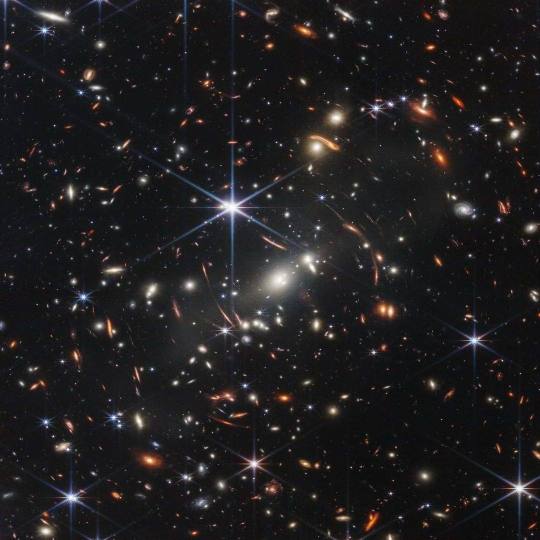
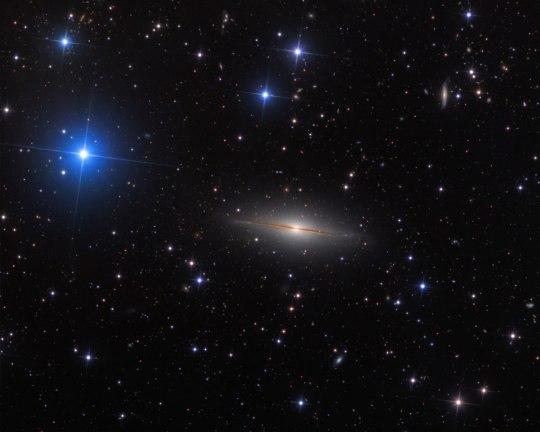
#fyppage#darkness#late night#night sky#darkcore#galaxy#outer space#planet#stars#dark space#dark hole#cosmic wonders#cosmos#space vibes#space aesthetic#james webb first full colour image#james webb telescope#james webb space telescope#james webb deepest sharpest view of universe#nasa#astrology#astronomy#astronaut#solar system#beyond the stars#james webb update#james webb images#space images#void#space art
266 notes
·
View notes
Text
Kind of insane to think out of all these unimaginable number of planets and galaxies, I’m blessed to live on the one with my chemical romance ❤ like no other planet has heard Helena
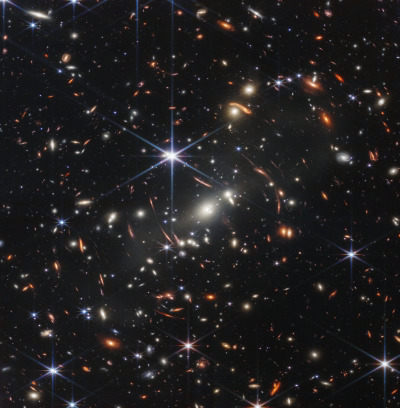
15 notes
·
View notes
Text
NASA spending 10 billion dollars on the James Webb telescope just for me to change my Notion cover photo then and not sign in again for the next 6 months
#james webb deepest sharpest view of universe#james webb telescope#nasa webb telescope#astronomy#notion#organization#study aesthetic#light academia
5 notes
·
View notes
Text

Hubble and James Webb comparison.
Hubble space telescope can see back to 13.5 billion years, around when the modern galaxies were formed and the Big Bang happened 13.8 billion years ago. With the JAMES WEBB telescope we can peer into an unseen time period in the universe- back to when the first galaxies, the first black holes and the first stars came into existence.
James Webb telescope is as close as we ever got to understand the Big Bang!!!!!
This is Amazing.
#nasa#astronomy#galaxy#space#james webb telescope#james webb images#james webb space telescope#james webb update#universe#science#astrophotography#cosmos#jwst#physics#planets#stars#black hole#james webb first full colour image#james webb deepest sharpest view of universe#james webb 5 points on what new telescope aims to achieve james webb#webb telescope#nebula#amazing#scientific#tags dont work#telescope#astrophysics#space science#hubble#hubble telescope
684 notes
·
View notes